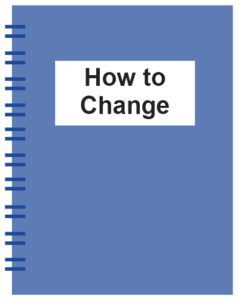“The secret to a better life is not to eradicate the impulses that make us human, but to understand them, outsmart them, and whenever possible, to make them work for us rather than against us.” – Angela Duckworth
In prior posts, I’ve discussed the psychology of change, the ADKAR model for change management, and strategies that reinforce good habits. I now add Dr. Katy Milkman’s contribution to the subject through her book, How To Change: The Science of Getting From Where You Are to Where You Want to Be. Here are evidence-based strategies to help us effect change and sustain it.
 Start fresh. A new beginning provides the impetus to disrupt established behaviors and adopt new ones. It can be a date on a calendar (e.g., first of the month, birthday, anniversary), a meaningful life event (e.g., cross-country move, promotion), or an unsettling wake-up call (e.g., health scare). The bigger the landmark, the more likely it supports a break from the past. “Blank slates” are powerful!
Start fresh. A new beginning provides the impetus to disrupt established behaviors and adopt new ones. It can be a date on a calendar (e.g., first of the month, birthday, anniversary), a meaningful life event (e.g., cross-country move, promotion), or an unsettling wake-up call (e.g., health scare). The bigger the landmark, the more likely it supports a break from the past. “Blank slates” are powerful!
Find ways to make change fun. The prospective gratification in achieving long-term goals can be thwarted by the unsatisfying nature of short-term behaviors to get there. Though we’d like to rely upon a self-discipline that keeps our eyes on the prize, we all have a present bias and a tendency toward impulsivity. Rather than put a consistent strain on willpower (and thereby have less of it for other tasks), we need to find ways to make it enjoyable to do the right thing. Temptation bundling pairs the challenging activity with one you crave doing – e.g., reading a page-turner while on the treadmill (and only when on the treadmill), or watching Netflix while chopping fresh vegetables to prepare a healthy meal. Gamification – i.e., adding fun to a monotonous task – also brings joy to the moment. As a recent Peloton bike convert, I can attest to the fact that this company has broken the code on how to make spin classes fun!
Make a binding commitment. We’re far less likely to get off track when we give ourselves “handcuffs.” Consumers build savings when they voluntarily sign on for accounts that assess penalties for early withdrawals. (A ceramic piggy bank that lacks easy access to deposited coins also works!) A publicly stated pledge displayed prominently may do the trick as most of us are loathe to let ourselves and others down. If this strategy seems daunting, start with a bite-sized commitment and work up to larger ones.
Create reminder systems. As a species, we are astonishingly forgetful. We forget half of what we learned in 20 minutes, 70% in 24 hours, and 80% in a month. As such, we need to establish cues that trigger positive behaviors in service of our long-term goals. For example, I keep a running tally of health-promoting activities on my desktop, and I’m motivated to check all the boxes every day. I also use “yellow stickies” on the bathroom mirror for irregular commitments. The very act of creating a reminder system and cuing behavior counters our tendency to flake out. It can also help us break big goals into smaller chunks.
Make a habit out of doing the right things. When we set our default behaviors wisely, we’ll opt into good behaviors without thinking about it. For example, my morning routine includes exercise. I get out of bed, attend to my ablutions, and then exercise for 30-60 minutes before breakfast. I don’t give myself the option of deciding whether or not I feel like doing it. When we face repeat decisions, we deplete willpower and open the door to a natural inclination toward laziness. When forming a new habit, try piggybacking it onto an established habit. Be careful not to make it too rigid or onerous. It either won’t stick, or it’ll become dislodged when life throws you curve balls.
Take care to bolster your self-confidence. We often fail to meet our goals (or even set them in the first place) because we don’t believe we have the capacity to change. Beliefs touch our emotions, direct our attention, influence our motivation, and affect our physiology. To counter a tendency toward resignation, we can build affirmation into the process and allow for leniency and “do overs” when we falter. We can also build ourselves up by learning to be our own advice-givers rather than subjecting ourselves to unsolicited commentary, however well intentioned.
Choose the company you keep wisely. Social influence carries tremendous power. Established norms create peer pressure that can work in our favor… or not. Surround yourself with folks who share common interests and whose circumstances align with yours. (Dr. Milkman notes: “For social influence to work, there can’t be too stark a difference between overachievers and those in need of a boost” lest it prove demoralizing for the latter.) Encourage one another. Share life hacks. Leverage social accountability.
Stay the course for the long haul. Transformative change requires constant vigilance. Obstacles – temptation, forgetfulness, self-doubt, sloth – stand ready to reassert control. Acknowledge their presence and use the tools described above to undermine their influence.